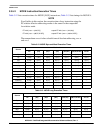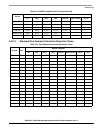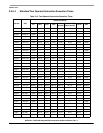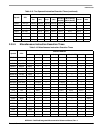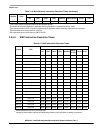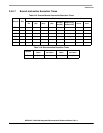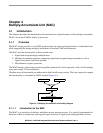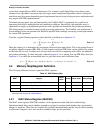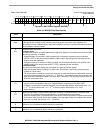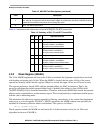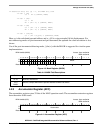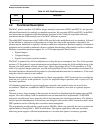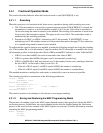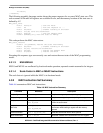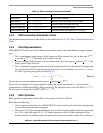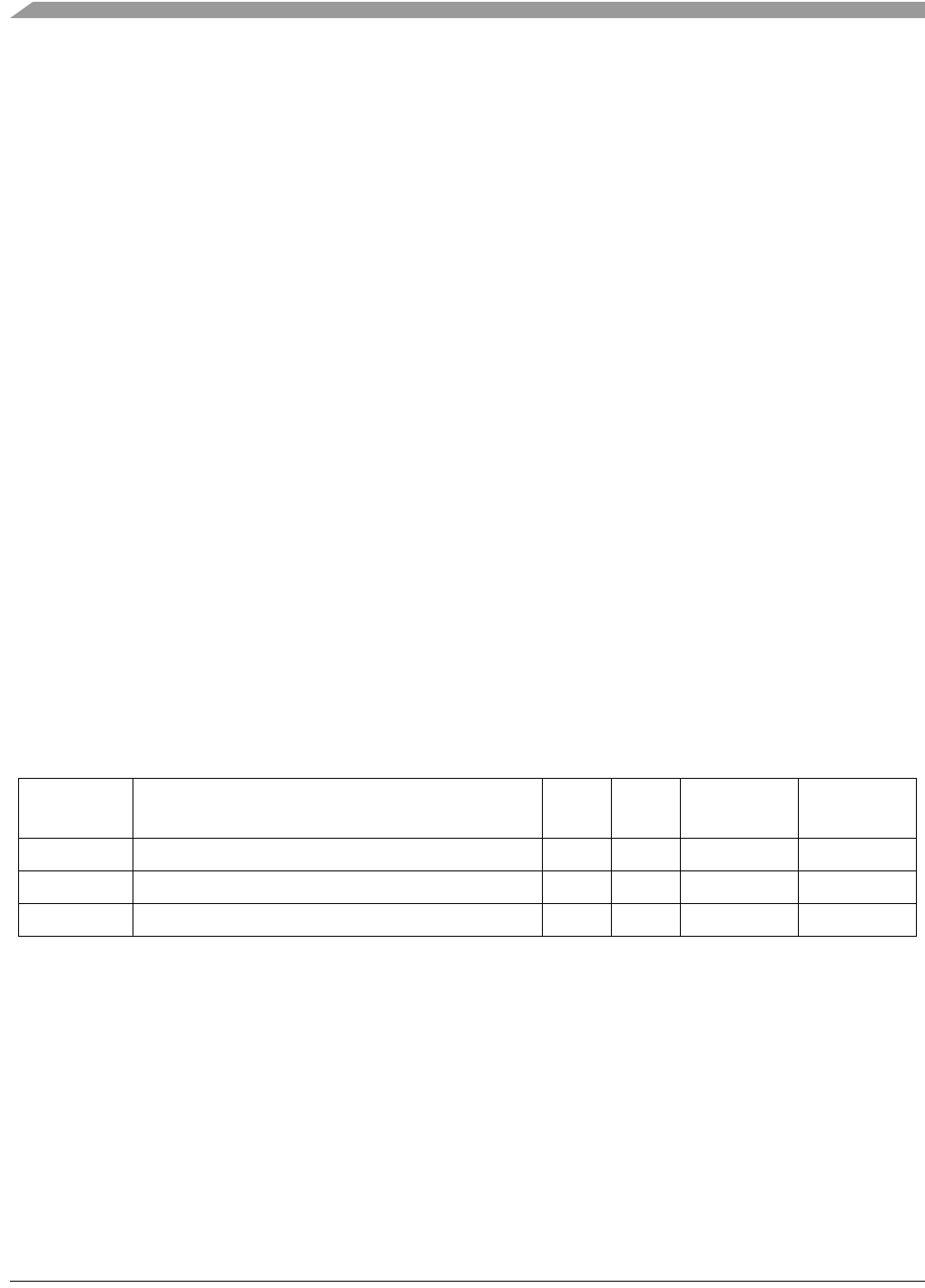
Multiply-Accumulate Unit (MAC)
MCF52211 ColdFire® Integrated Microcontroller Reference Manual, Rev. 2
4-2 Freescale Semiconductor
cycles than comparable non-MAC architectures. For example, small digital filters can tolerate some
variance in an algorithm’s execution time, but larger, more complicated algorithms such as orthogonal
transforms may have more demanding speed requirements beyond scope of any processor architecture and
may require full DSP implementation.
To balance among speed, size, and functionality, the ColdFire MAC is optimized for a small set of
operations that involve multiplication and cumulative additions. Specifically, the multiplier array is
optimized for single-cycle pipelined operations with a possible accumulation after product generation.
This functionality is common in many signal processing applications. The ColdFire core architecture is
also modified to allow an operand to be fetched in parallel with a multiply, increasing overall performance
for certain DSP operations.
Consider a typical filtering operation where the filter is defined as in Equation 4-1.
Eqn. 4-1
Here, the output y(i) is determined by past output values and past input values. This is the general form of
an infinite impulse response (IIR) filter. A finite impulse response (FIR) filter can be obtained by setting
coefficients a(k) to zero. In either case, the operations involved in computing such a filter are multiplies
and product summing. To show this point, reduce Equation 4-1 to a simple, four-tap FIR filter, shown in
Equation 4-2, in which the accumulated sum is a past data values and coefficients sum.
Eqn. 4-2
4.2 Memory Map/Register Definition
The following table and sections explain the MAC registers:
4.2.1 MAC Status Register (MACSR)
The MAC status register (MACSR) contains a 4-bit operational mode field and condition flags.
Operational mode bits control whether operands are signed or unsigned and whether they are treated as
integers or fractions. These bits also control the overflow/saturation mode and the way in which rounding
is performed. Negative, zero, and overflow condition flags are also provided.
Table 4-1. MAC Memory Map
BDM
1
Register
Width
(bits)
Access Reset Value Section/Page
0x804 MAC Status Register (MACSR) 32 R/W 0x0000_0000 4.2.1/4-2
0x805 MAC Address Mask Register (MASK) 32 R/W 0xFFFF_FFFF 4.2.2/4-4
0x806 Accumulator (ACC) 32 R/W Undefined 4.2.3/4-5
1
The values listed in this column represent the Rc field used when accessing the core registers via the BDM port. For more
information see Chapter 28, “Debug Module.”
yi() ak()yi k–()
k1=
N1–
∑
bk()xi k–()
k0=
N1–
∑
+=
yi() bk()xi k–()
k0=
3
∑
b0()xi() b1()xi 1–()b2()xi 2–()b3()xi 3–()+++==



